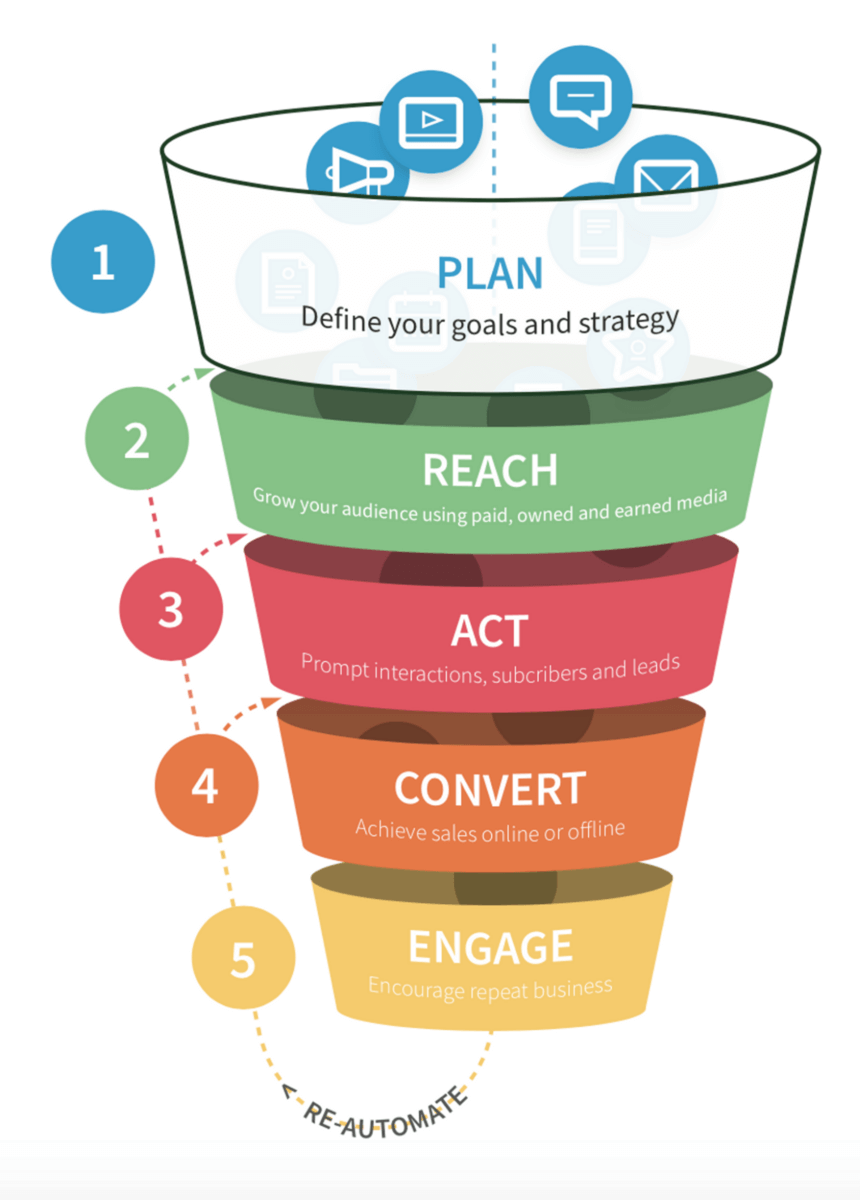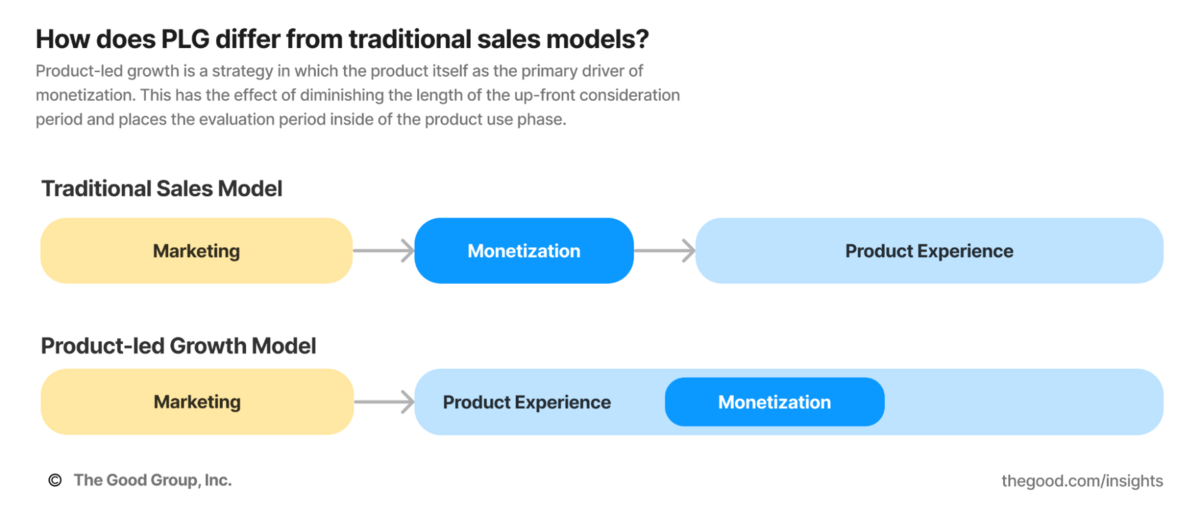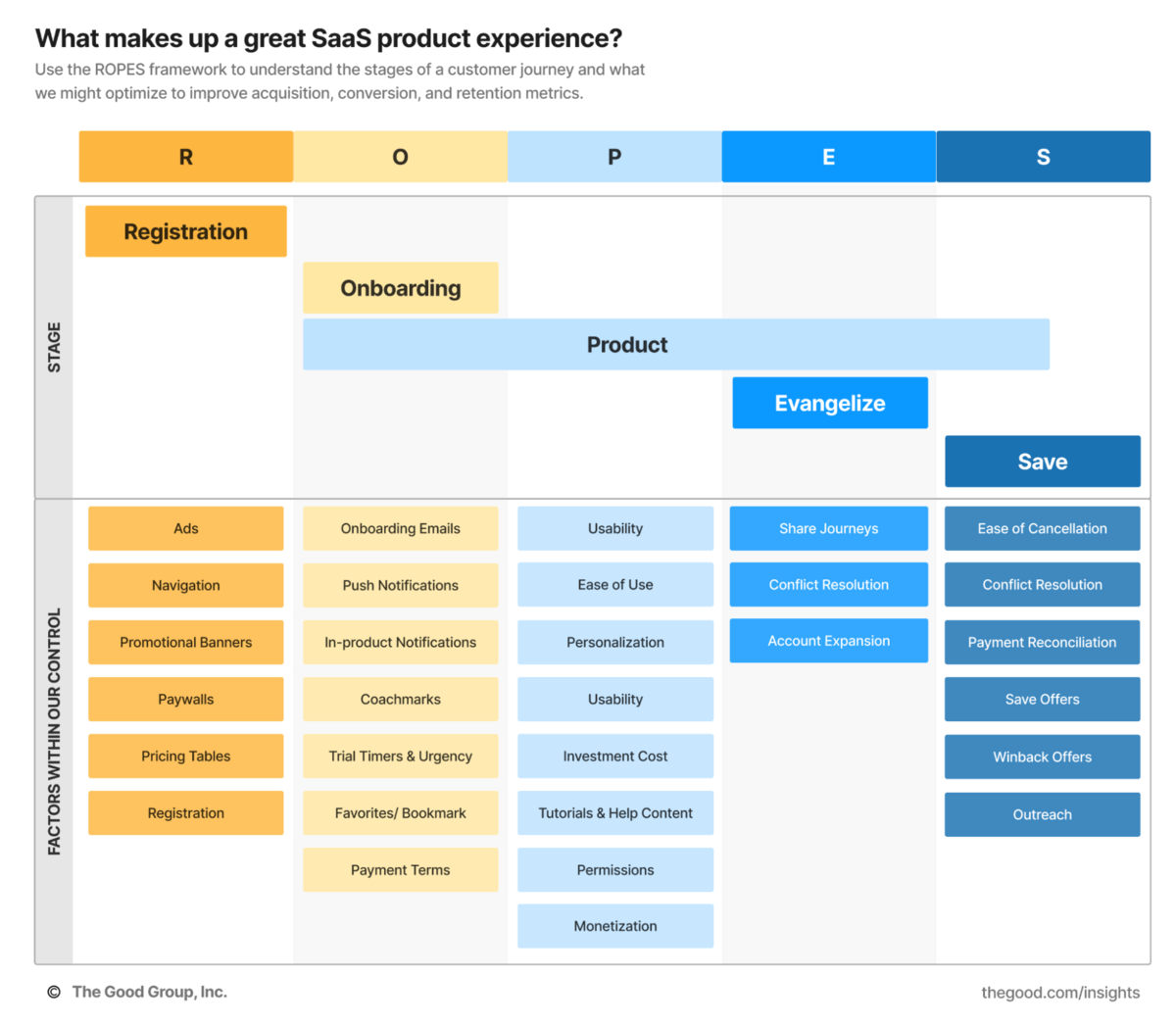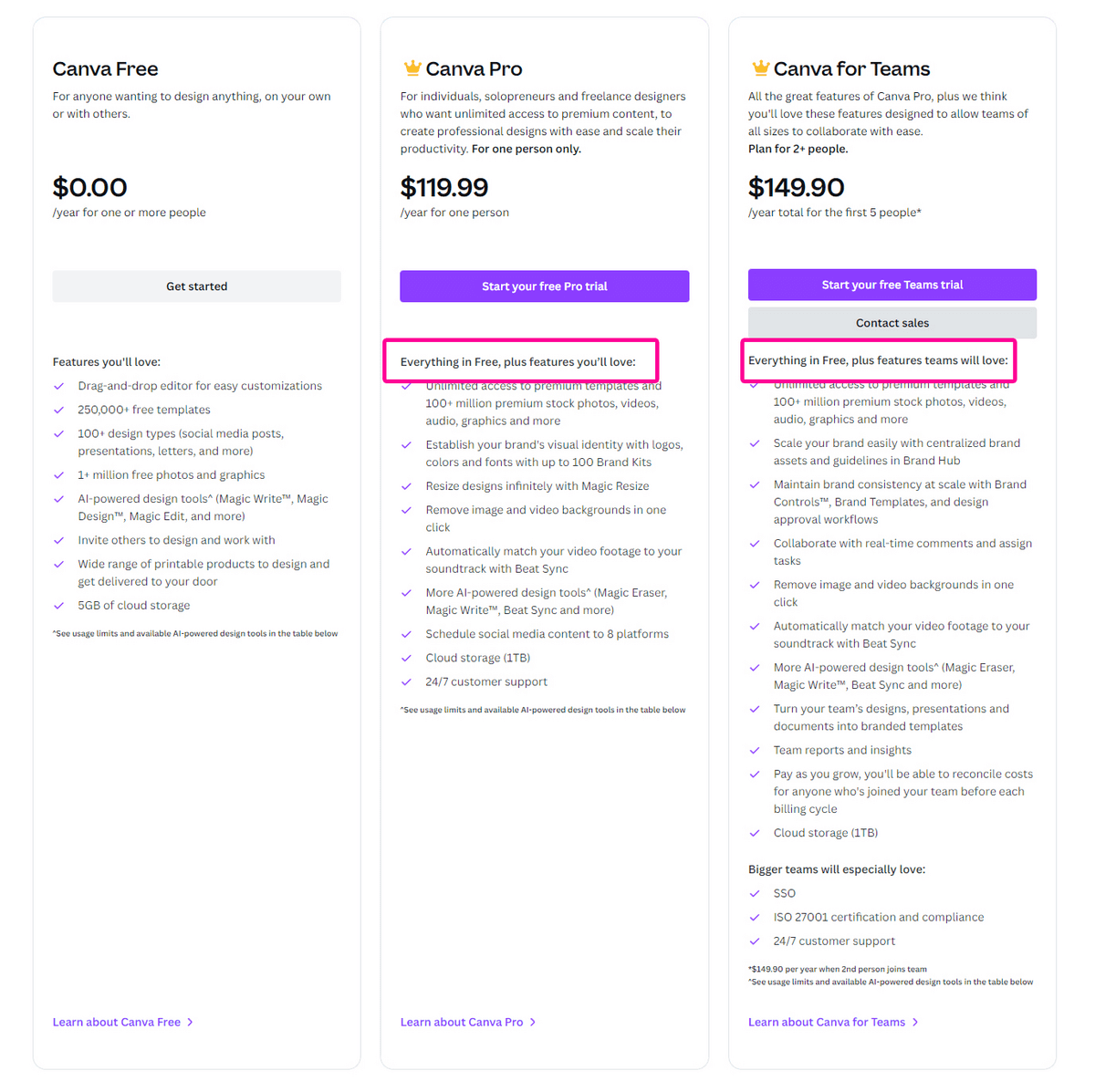
Leverage Product-Led Growth with the ROPES Framework
With the help of our proprietary ROPES framework, SaaS companies can leverage product-led growth and boost conversions.
When you visit a car dealership to buy a car, the salesperson encourages you to take a test drive. They have plenty of marketing brochures and rehearsed scripts to tell you all about the vehicle, but they know that nothing sells it better than a test drive.
Digital products can leverage the same strategy. Instead of using landing pages, demos, ads, and clever copywriting to sell the product, why not just let the user try it for free?
Of course, free trials and freemium models aren’t new. But many SaaS leaders fail to optimize this unique type of customer experience and let the product drive growth.
That’s where the ROPES framework can help.
Created for SaaS leaders, the model we explore in this article will help answer key questions, including:
- What are the key stages of a product-led growth customer journey?
- What core competencies does a team need to drive growth via the product?
- What metrics and milestones are important to track for a free trial or freemium product?
- How can we make the most of subscribers by retaining and reducing churn?
Keep reading to explore the growth levers you can pull to drive product-led growth.
The Old Customer Experience Model
While there are several frameworks for the customer experience, they tend to overemphasize the importance of marketing and break down when applied to free trials and freemium products.
Take the RACE framework, for instance. This popular framework consists of a series of steps to help brands engage their customers throughout the customer lifecycle.
But this framework – and many like it – are almost entirely devoted to marketers doing the marketing. It says very little about the period when users actually use the product.

When it comes to freemium products or free trial products, marketing doesn’t make the sale. The product does the work.
In this case, the success of a product is not based on how well a brand communicates with a customer before the conversion. It’s based on how well the product solves real problems for its users. The product leads the growth.
What is Product-Led Growth?
Product-led growth is a strategy that emphasizes the product itself as the primary driver of customer acquisition, conversion, and retention.
Companies that successfully implement a product-led growth strategy often benefit from increased customer loyalty, higher conversion rates, lower customer acquisition costs, and sustainable long-term growth.
Traditionally, companies have relied on sales and marketing tactics to create leads and drive customer adoption. Ads and websites had to do most of the selling, and the onus was on the potential user to read ads, navigate websites, choose between feature matrices, and at times go through a complicated sales process (on or offsite).
In a product-led growth model, companies remove as many obstacles as possible to acquiring free registered users.
This approach often involves offering a free or freemium version of the product, allowing users to experience its value before committing to a paid subscription. If the experience is good enough to keep them using it, and the paid features are valuable enough, then the hope is that users will ultimately convert into paying customers. In this way, the product serves as the main vehicle for customer acquisition and expansion. Companies focus on building a product that is intuitive, user-friendly, and delivers immediate value to customers.
Free trials and freemium models are popular with companies like Canva, Adobe, and Spotify. Just like test driving a car, they let you test drive their product and discover the value on your own, before making a purchase decision. Freemium models also work well for digital publishers who give away some content for free, but lock premium content behind a paywall.
To see this in action, learn how The Telegraph improved its onboarding experience and increased subscriptions.
Free Trial/Freemium and the Revolution in Product Experience
The move toward freemium and free trial models has fueled the product-led growth era.
While product-led companies like Apple have been proving the value of good design for decades, one primary activation point for this product-first approach is the rise of freemium and free trial models.
Let’s talk definitions for a second.
Freemium
The freemium model is a customer acquisition model providing access to some of a product to a potential customer for free without a time limit.
Freemium products like Spotify and Canva offer a free, slimmed-down version of a product to build a large base of free users. When the free version is clearly valuable, there is a low barrier to entry, so users sign up willingly. During use, users discover that the tool ultimately provides enough free value that users will stick around and continue to engage with the freemium version. (Example: Loom) Ideally, as their reliance on the tool grows, so do their needs, and they eventually convert to a paid user.
Free Trial
A free trial, on the other hand, is a customer acquisition model providing a partial or complete product to a potential customer for free for only a limited amount of time.
Free trials for robust productivity products like Airtable are great because they allow users to explore the full capabilities of the tool before making a purchase decision. The urgency created by a limited-time trial inspires the user to take action before the trial ends.
Note that some companies use both the freemium and free trials models, such as The New York Times and Canva.
The promise of any free-to-paid model is that if the product can build enough value into the free version, while still gating certain features, users will build reliance on the free version. When they eventually tire of the limitations imposed on free users, they’ll convert from free to paid and upgrade to access more features.
Product Led Growth and Traditional Sales Models
In both freemium and free trial models, the user’s evaluation period is deferred. Instead of deciding if the product is worth the money based on landing pages, demos, webinars, and marketing materials, users make decisions based on the real value the product brings to their life.
This diminishes the length of the up-front consideration period and places the evaluation period inside of the product use phase.

In essence, a user’s likelihood to convert has less and less to do with how compelling sales content is. It has a one-to-one relationship with engaging onboarding and a great product experience.
The formula becomes refreshingly simple: If the product creates more value than its cost, people will buy.
And the effect is good for users. By allowing users to test drive the product, we necessitate a good product experience. Because users make a purchase decision based on the potential of the product to solve their problem, companies are incentivized to make great products—from great onboarding and tutorials to ease of use and even feature expansion.
But what does it take to be product-led? While there are a number of frameworks that dictate how to market and convert using a traditional sales model, the existing literature on how to build products that do the selling is scarce.
We need a new framework for designing a great customer experience where the product is front and center.
That’s why we’ve created The ROPES framework.
Introducing the ROPES Framework
The ROPES framework is designed to help product-first leaders think about, optimize, and improve the end-to-end customer experience.
It covers everything from registration to cancellation and will help product-led companies:
- Define key stages in the customer journey
- Identify important metrics to measure each stage, and
- Understand the elements, forces, and factors that help or hinder engagement at each stage of the customer journey
Let’s walk through the ROPES framework. We’ll explain how our model can be used to understand what makes a great product experience, what levers you can pull at each stage of the customer journey to improve acquisition, conversion, and retention metrics, as well as who on a SaaS product team should be leading the phase.

Stage 1: Registration
The first part of a product-led strategy is the registration stage. This is where you present the product in a compelling way that makes people want to register. Your goal is to get them into the product as quickly as possible. Your tools are ads, navigation, banners, paywalls, pricing tables, and the signup experience.
This stage should be driven by the marketing team in collaboration with UX designers. They should work to make signing up as simple and painless as possible. Aim for ease of use, low perceived effort level, and minimal hoop-jumping throughout the registration process.
Your registration form should avoid asking unnecessary questions, as longer forms get lower conversion rates. Instead, you can collect the information later to personalize the product to user needs and mine data.
Key metrics of the registration stage:
- Unique visits
- Return visits
- Engagement with key actions (e.g., watch a certain video)
- Lifetime value (LTV)
- Customer acquisition cost (CAC)
- Renders
- Registration starts
- Registration completion
Important competencies to optimize registrations:
- Ad & media buying strategy – Graphic design for ads, social, etc.
- Relationship management – While ads and word of mouth are foundational approaches to getting in front of your target audience, some products with especially niche markets (e.g., B2B software) benefit from referral partnerships, industry events, and comarketing.
- Web design & development – You’ll need this support for any custom website elements.
- Visual design and copywriting – You need a team that can create a clear and compelling case for why users should go through the registration process.
- User experience design – Make sure instructions are clear, forms are concise and designed for high efficiency, and the form design prevents but helps remediate errors that would prevent a successful registration.
- Conversion rate optimization – Test and optimize each component of the registration process.
Stage 2: Onboarding
The onboarding process is where we want users to have an “aha” moment. Specifically, users should launch the product, view helpful guidance, and engage with whatever product features will be most likely to lead them to find value and continue engagement.
In the user onboarding process, your tools are onboarding emails, push notifications, in-product notifications, coach marks, trial timers (which create urgency), favorites/bookmarks, and payment terms.
Key metrics of the onboarding stage:
- Product launches – Some products launch automatically upon registration (such as web apps like Canva), but others will require users to take an additional step (such as Autodesk and other desktop apps).
- Health metrics – These vary depending on the nature of your product. What actions might users take to get to the aha moment? Identify what actions users must take to have a sticky experience and lead to engaged users. In Canva, for instance, users are “healthy” when they use templates, start projects, share projects, or add team members to their account.
- Email and push notification open rates – Teams may send notifications to their users to help them learn and return to the product.
Important competencies to optimize onboarding:
- UX Research – Sticky products have great-looking and highly functional designs. A UX researcher can help you clarify your user personas, the use cases that matter to them, and the interface design that will be most intuitive and actionable.
- Visual design – In the age of Apple, users associate sleek professionalism with actual functionality. A designer will be able to marry beauty, ease of use, and business goals.
- Email marketing — Sometimes users need a little support understanding the capabilities a product has to offer. Email campaigns help users understand use cases and the literal how-to of working the product.
- Analytics — While most marketers know their way around Google Analytics, there’s a difference between simple MAU/DAU reporting and segmenting-based user activities and multi-step flows. Working with an analytics professional who is deeply skilled in data analysis will give you foundational knowledge about the actions that lead to conversion.
- A/B testing — This will help you learn, with statistical certainty, which metrics impact retention and conversion. While an analytics skill set can help you form hypotheses, A/B testing can prove which actions are ultimately causal to retention and conversion.
Stage 3: Product Experience
The product stage is where users engage with the product frequently. So, optimizing this stage of the experience means improving the product itself. Make it easy to use and personalized to their needs. Drive down the investment cost (in terms of time and money) as much as possible. Offer plenty of tutorials and help content so users don’t get stuck. Most importantly, make it easy and compelling to upgrade to a paid subscription.
Key metrics of the product experience stage:
- Product launches
- Engaging with push notifications
- Monthly active users (MAU)
- Daily active users (DAU)
- Deeper feature use (in the case of Canva, for instance, this might include the use of folders, collaborating with team members, or using the screen recorder).
- Conversions to paid tiers (i.e., monetization)
Important competencies to optimize the product experience:
- Data analytics — Understanding how users engage with a product and what activities are associated with retention, conversion, and cancellation.
- UX research — Understanding both quantitative and qualitative aspects of customers and their experiences will help you understand not just who is using your product, but what they want to get out of the tool, what is preventing them from converting to paid, and what will keep them happy.
- Product management — A product manager who is truly tapped into their audience and business goals will have an easy time prioritizing features, tools, and tech needed to keep users happy in the long run.
- A/B testing – To test and validate how to improve conversion rates and monetize free users.
Stage 4: Evangelize
In this stage, the goal is to leverage your built-in audience (current users) to grow your user base. You’ll notice that many of the most successful products from collaboration tools like Adobe Acrobat and Loom to entertainment tools like TikTok bake tools to share, invite, and collaborate with others into the product loop, thereby creating lots of registration opportunities.
Key metrics of the evangelize stage:
- Share
- Invite
- Form/ Signup renders
- Registrations via share touchpoints
Important competencies to optimize the evangelize stage:
- Data analytics – To understand how and where people share, and whether or not those share entry points are leading to registration.
- UX research – To understand what might prevent users from sharing or registering via a shared journey.
- A/B testing and evaluative research – To test and validate how to improve evangelization metrics and registrations for new users
- Product management – To create, prioritize, and maintain evangelization-focused initiatives
Stage 5: Save
Lastly, we have save or win back, which is where we prevent cancellations, reduce churn, and if users ultimately do cancel, we try to win them back. Ideally, users won’t reach this stage, but it’s a necessary component of the product life cycle.
Your tools in this stage include conflict resolution techniques, payment reconciliations, save offers, win-back offers, and outreach programs. It’s also a good idea to make re-subscribing easy. This gives users that cancel a smooth path to reengage with the product in the future.
Key metrics of the save stage:
- Cancellation starts – The number of people who clicked the cancel button and started going through the cancellation flow.
- Cancels – The number of people who completed the cancellation process and how many people exit the funnel.
- Churn – Percent of total uses lost in a given period.
- Saves – Percent or number of times a user started to cancel, but the cancellation was not completed.
- Re-engagement (open emails, etc) – Number of users who, within a period after canceling, engage with winback campaigns (emails, ads, etc.).
- Winback – Number of times a previous user signed up for a paid account anew.
Important competencies to optimize the save stage:
- Data analytics — To evaluate cancellation flow start, drop off, and success of re-engagement campaigns.
- UX & research — To understand why people are canceling and how to prevent it.
- A/B Testing and evaluative research — To test and reduce the volume of successful cancellations and test campaigns (email, ad, etc.) to re-engage churned users.
- Save and remarketing strategy — To architect the strategies and tactics to defer cancellations and win users back.
Product-Led Growth FAQs
Here are some common questions we often hear about product-led growth, the product experience, and how to improve free trial to paid conversions.
What makes a great product experience?
A great product experience is intuitive and user-friendly, with a seamless and engaging interface that allows users to easily accomplish their goals. It delivers value by effectively addressing the user’s needs and pain points, providing tangible benefits and solutions.
Additionally, a great product experience is reliable, stable, and performs optimally, minimizing errors and downtime. It also offers a high level of customization and flexibility, allowing users to adapt it to their preferences and workflows.
Lastly, a great product experience includes excellent customer support and ongoing updates and improvements based on user feedback, ensuring a positive and evolving user experience.
How do you increase conversion from trial to paid?
To increase conversion from trial to paid, focus on demonstrating the value and benefits of your product during the trial period. Simply put, the product needs to create more value than it costs. Here are some tips:
- Offer personalized onboarding, providing guidance and support to help users fully explore and understand the product’s capabilities.
- Implement targeted email campaigns and in-app messages to engage with trial users, highlighting the additional features and advantages of the paid version.
- Provide limited-time incentives, such as discounts or exclusive offers, to create a sense of urgency.
- Foster a positive user experience through responsive customer support.
- Utilize customer success stories and social proof to build trust.
- Continuously monitor and optimize the trial experience to improve conversion rates.
What is the freemium strategy?
The freemium strategy is a business model where a company offers a free version of its product or service with limited features or functionality. At the same time, they also provide a paid version with additional premium features or enhanced capabilities.
The goal of the freemium strategy is to attract a wide user base by offering a valuable free offering. This serves as a marketing tool to generate user adoption and engagement. Consequently, the company then converts those free users into paying customers who opt for the premium version of the product.
Canva is an example of the freemium strategy that offers a free version of its graphic design platform with a range of basic features and templates accessible to users. This free version allows users to create visually appealing designs without the need for technical expertise.
Canva monetizes its platform by offering a premium subscription called Canva Pro, which provides advanced features such as additional templates, enhanced collaboration tools, and access to a vast library of premium elements.

What is the difference between free trial and freemium?
The main difference between a free trial and a freemium model is the pricing and access to features. A free trial typically offers full access to all features of a product for a limited time. As such, this allows users to experience its complete functionality before deciding to purchase or upgrade.
On the other hand, freemium provides a permanently free version of the product with limited features or capabilities. Freemium users can upgrade to a paid version to unlock additional advanced features or to access the product without limitations.
Free trials offer a temporary full-feature experience to drive conversions. On the other hand, freemium focuses on offering a valuable, but restricted, product experience to attract and retain users.
Let Us Guide Your Product-Led Growth Strategy
We’ve explained why the old customer experience framework isn’t suitable for some organizations and offered a new model that puts the product at the center of your marketing. Now, our ROPES framework is the perfect tool to govern the product-led growth of SaaS companies and digital publishers.
If a free trial or freemium model is right for your product, we can help you use your product to grow your business with custom services.

About the Author
Natalie Thomas
Natalie Thomas is the Director of Digital Experience & UX Strategy at The Good. She works alongside ecommerce and product marketing leaders every day to produce sustainable, long term growth strategies.